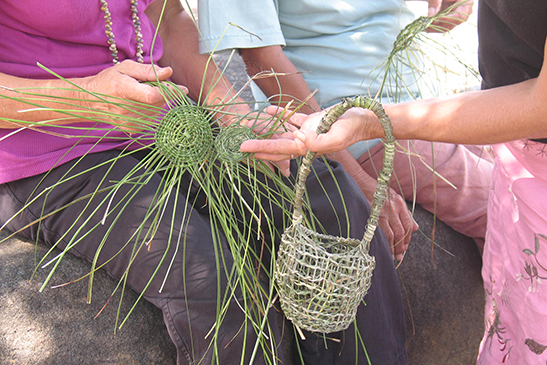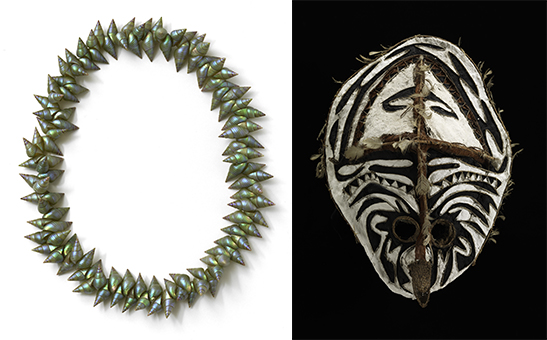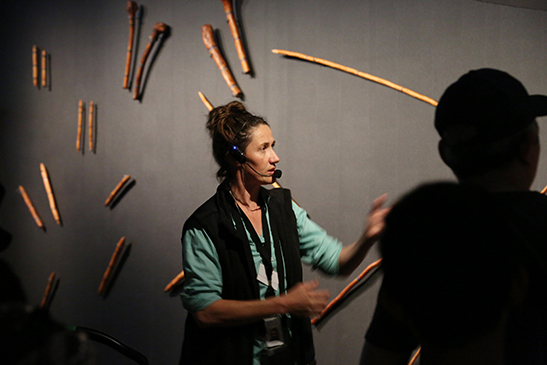First Peoples Art and Culture

The First Peoples Art and Culture department (FPAC) is responsible for a global Indigenous collection of more than 12 000 objects and artworks. The FPAC team (collection manager and curators) manage an active program of community engagement, research, acquisitions, and exhibitions. Acquisitions and loans build the collection and add to an understanding of First Peoples cultures. Connecting source communities with Ancestral objects is a high priority.
The FPAC collection consists of objects from many nations across Australia, the Pacific, Asia, Africa, and the Americas. The Pacific collection (the largest component) primarily contains objects from Melanesia: Papua New Guinea, Solomon Islands, Vanuatu, and Fiji, with other areas such as New Zealand, Samoa, Tonga, Niue, and Kiribati.
A key focus of the department is the Tasmanian Aboriginal collection and developing projects and exhibitions with the Tasmanian Aboriginal community that support self-determined cultural expression. TMAG’s long-term galleries ningina tunapri - To Give Knowledge and Understanding and parrawa parrawa! Go Away! are dedicated to telling pakana (Tasmanian Aboriginal) histories, while temporary exhibitions tayenebe - Exchange (2009-11) and kanalaritja – An Unbroken String (2016-20) toured these histories nationally through the cultural practices of fibrework and shell necklace stringing.
TMAG is committed to implementing the recommendations of the Australian Museums and Galleries Association's First Peoples: A Roadmap for enhancing Indigenous engagement in Museums and Galleries ( 2018), and is guided by the Tasmanian Aboriginal Advisory Council (established in 2003).
TMAG, inaugurated in 1885, was part founded from the collections of the Royal Society of Tasmania, established in 1843. Until the mid-1900s unethical collecting practices were widespread. During this time First Peoples human remains were brought into the collections, and traded, alongside cultural objects. Since the 1970s the museum has enacted a program of repatriation of ancestral remains and secret and sacred material. In 2021 TMAG formally apologized to the Tasmanian Aboriginal community for the "pain, suffering and ongoing trauma" caused by the museum.
For enquiries, please email: curatorenquiries@tmag.tas.gov.au
Top image: tayenebe workshop, Launceston

(above, left) kanalaritja (necklace); Ashlee Murray; King marina shells [Phasianotrochus irisodontes], cotton; Tasmania; M8937
(above, right) Eharo mask; Elema people, Purari Delta, Gulf Province, Papua New Guinea; plant fibre, cane, pigment, feathers; M2576

(above) First Peoples Learning Facilitator Brooke Robinson running a tour of taypani milaythina-tu: Return to Country

